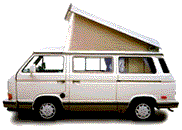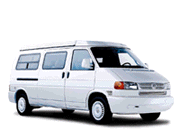Date: Thu, 2 Dec 1999 06:31:53 -0500
Reply-To: Bulley <gmbulley@BULLEY-HEWLETT.COM>
Sender: Vanagon Mailing List <vanagon@gerry.vanagon.com>
From: Bulley <gmbulley@BULLEY-HEWLETT.COM>
Subject: Re: Engine balancing
-----Original Message-----
From: John Rodgers [SMTP:inua@SCOTT.NET]
Sent: Wednesday, December 01, 1999 11:47 PM
To: vanagon@GERRY.VANAGON.COM
Subject: Engine balancing
Can anyone explain to me the process/procedure for balancing the
internal parts of an engine....pistons, rods, etc, and dynamic balancing
of the entire rotating assembly.....pistons, rods, crank, flywheel and
clutch plate. How do they do that on automotive engines?
Yes, someone can. I am one who can, and will.
Do machine
shops literally grind a little material off the piston skirts or some
other place until the pistons match the lightest one in the bunch?
Yes.
Is it similar for rods.
Yes.
Where is the typical location to remove material?
For rods, not only do they match the members of the set one to another,
they also match to weight of the rod end-to-end. If you imagine a rod being
shaped roughly like the classic "dog bone" (femur) they balance the ends to
be identical.
What considerations must be given in each case?
Not sure I understand the question. Basically, anything that spins, or
reciprocates in a motor is a candidate for balancing. Machinists know where
they can, and cannot take off metal.
How would one balance a crankshaft?
One would take it to a machine shop, where it would be mated with the
flywheel, clutch, & clutch cover, then spun on a machine (like a tire
balancer). The educated machinist use the figures from the machine to judge
where to mill off metal in judicious locations, like forge marks, and throw
ends.
And where would the metal be removed?
As above.
And what do you look out for?
Not sure what you mean. Look out for shops that could get to it
immediately, or that predominantly have tractor parts, or bicycle parts in
the shop. Look for other VW motors. Talk with the machinist.
Years ago <<<snip>>>>
This service runs anywhere from $50 to $150. I paid $100 here in Raleigh at
the renowned T-HOFF. You may be interested in a counter-weighted crank,
which further eliminates vibrations/harmonic imbalance in your motor. There
is a little more information on my website about motor balancing/CW
cranks... http://www.bulley-hewlett.com/VWindex The dollar figures I quote
there are guesses (and I say it). The cost of a CW crank was $350 for my
motor, and as I said, my balance was $100.
Good luck, it is the best money you will spend when rebuilding.
G. Matthew Bulley
Bulley-Hewlett
Corporate Communications Counselors
www.bulley-hewlett.com
Cary, NC USA
888.468.4880 tollfree
------------------------------------------------------------------------
----------------------
Get your FREE semi-private E-mail account, use your computer at work.
-----Original Message-----
From: John Rodgers [SMTP:inua@SCOTT.NET]
Sent: Wednesday, December 01, 1999 11:47 PM
To: vanagon@GERRY.VANAGON.COM
Subject: Engine balancing
Can anyone explain to me the process/procedure for balancing the
internal parts of an engine....pistons, rods, etc, and dynamic balancing
of the entire rotating assembly.....pistons, rods, crank, flywheel and
clutch plate. How do they do that on automotive engines? Do machine
shops literally grind a little material off the piston skirts or some
other place until the pistons match the lightest one in the bunch? Is it
similar for rods. Where is the typical location to remove material? What
considerations must be given in each case? How would one balance a
crankshaft? And where would the metal be removed? And what do you look
out for?
Years ago I used to balance cranks and aircraft propellers some. The
cranks would be put on a knife edge device and if something was not
right it would roll right over with the heavy side down. Propellers same
way. A stub shaft was mounted through the hub assembly an the whole
thing set on a knife edge. It would always rotate to heaviest side down.
In some of the propellers you would add lead wool to hollow bolts to get
the balance right, or add or remove lead washers in certain parts of the
propeller.
But i have no idea how it is done in the automotive world.
Any input would be appreciated.
Thanks,
John Rodgers
"88GL driver wannabe

